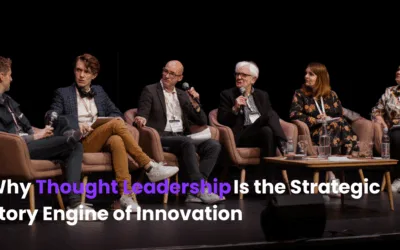For the longest time, innovation felt like a pretty straight line. You had the smart folks in the lab, toiling away on some fantastic new invention. Then marketing would try to figure out how to sell it. Finally, production would try to build tons of them. It was almost like a factory for ideas. The problem was, this often led to brilliant solutions for problems nobody had, or products that were technically amazing but a nightmare to actually make in big numbers.
But things have changed. Today, a powerful new way of working is really taking hold. It’s like a three-way partnership where deep R&D, real-world customer feedback, and the nitty-gritty of production aren’t just sharing a building – they’re actively working together, and often at lightning speed. This isn’t just about getting products out faster; it’s about making products that fit better, quicker, with a lot less waste.
Why It’s a Big Deal Now: The Pressure Cooker of Expectations
The idea of bringing customers into product development isn’t exactly new. Co-creation, user-centered design – we’ve heard these terms before. What’s different now is how intense and immediate that feedback loop is, and our ability to actually do something about it.
Think about it: people expect custom solutions, experiences tailored just for them, and products that change as fast as their own needs do. We’re living in an “I want it now” economy, and that applies to innovation too. If your R&D lab is working in isolation for two years, the market will have moved on before your new product even sees the light of day. We’re all a lot less patient, and it’s super easy to find alternatives.
According to Accenture, companies that continuously adapt to changing customer needs and market conditions are significantly more likely to outperform peers. A huge part of being a “living business” is this constant check on customer needs and the flexibility to react. It’s not just about getting to market quickly; it’s about staying *relevant* quickly.
Plus, the cost of messing up has shot up. Building something nobody wants, or something that’s too expensive to produce at scale, isn’t just a small mistake anymore – it can kill a company in today’s tough markets. As Professor Clayton Christensen famously noted, a shocking 95% of new products bomb. That’s an awful lot of wasted lab hours, customer surveys, and production capacity if we’re not getting this right. This new approach aims to flip that failure rate by making sure things are relevant right from the start.
How This All Comes Together: A Three-Way Chat
So, what does this actually look like in real life? It’s not just “the lab sends data to marketing” or “production tells R&D what they *can’t* build.” It’s a much more flowing, back-and-forth, and often tech-powered conversation.
Lab Meets Customer:
Imagine an R&D team not just showing off prototypes, but running small experiments directly with a group of target customers. This isn’t your grandma’s focus group. It could be digital simulations where customers play with a virtual product, giving instant feedback on features, how easy it is to use, and even how they *feel* about it. Or maybe it involves making a few physical items to test in specific situations. For instance, some car companies use virtual reality to let potential buyers “drive” future car models, checking their reactions to everything from the dashboard layout to seat comfort, long before a real car is even built. The information gathered here goes straight back to the engineers, not just as “customer wishes,” but as actual data to guide design choices.
Customer Meets Production:
This is where things really get real. Production isn’t an afterthought or a roadblock anymore. Modern manufacturing, especially with breakthroughs like 3D printing and modular design, offers amazing flexibility. Customer feedback can now directly influence not just what gets made, but how it’s made, and how many. If a beta test with customers shows a strong preference for a slightly different part, advanced production methods can often adapt quickly, saving time and money on retooling. This also means making things based on actual demand, cutting down on wasted inventory, and matching production cycles much more closely to what customers have shown they want. It’s moving from “build it and maybe they’ll come” to “they’ve told us exactly what they want, so let’s build that.” (We usually call this “market-product fit”).
Production Meets Lab (and vice-versa):
This connection is probably the most overlooked, but it’s super important. What production learns is pure gold for R&D. How easy something is to make, how much it costs, and if it can be scaled up – these are just as crucial as its shiny new features. This Design for Manufacture process can be intensive – but super worthwhile. When R&D works closely with manufacturing engineers from the very beginning, designs are made with production in mind. This avoids those frustrating moments where a brilliant lab idea hits a wall because it’s impossible (or way too expensive) to mass-produce. On the flip side, new developments in materials or processes from the production side can open up brand new possibilities for R&D, letting them dream up products that we never could have made before. Think about how new materials have enabled amazing medical devices or aerospace components – often, these advances start on the factory floor, not just in pure science labs.
For Leaders: What You Need to Know
If you’re an executive looking at this shift, this isn’t just some abstract trend. It demands real action and a complete rethinking of how different departments work together, or rather, don’t work together.
- Tear Down Those Walls: You absolutely *must* get different teams collaborating. Create shared goals, shared ways to measure success, and even shared physical spaces or digital tools where R&D, product, marketing, and operations can talk every day. Push for agile methods that focus on quick, repeating cycles of development and feedback. Make it clear that “your department’s success” is totally tied to how well the whole innovation process works together.
- Invest in Connecting Tools and Data Know-How: A lot of this convergence runs on data. Real-time customer comments, production stats, R&D simulation results – all this information needs to flow freely and be understood by everyone. Put money into platforms that make this data sharing easy and train your teams to understand data better. This isn’t just for data scientists; everyone needs to see how insights from one area affect another.
- Make Experimentation a Core Habit: This integrated model thrives on constantly trying new things, learning, and adapting. Foster a culture where a “failure” in a small experiment is seen as a valuable lesson, not something you get in trouble for. Set aside resources for quick prototyping and testing, both in the lab and with customers, and celebrate the insights you gain, no matter what the immediate product outcome is.
The truth is, the future of innovation isn’t about some lone genius in a lab, or marketing people yelling into the void, or production lines that never change. It’s about a lively, smart conversation between all three. Those who make this conversation happen successfully won’t just keep up; they’ll set the pace for what comes next.



